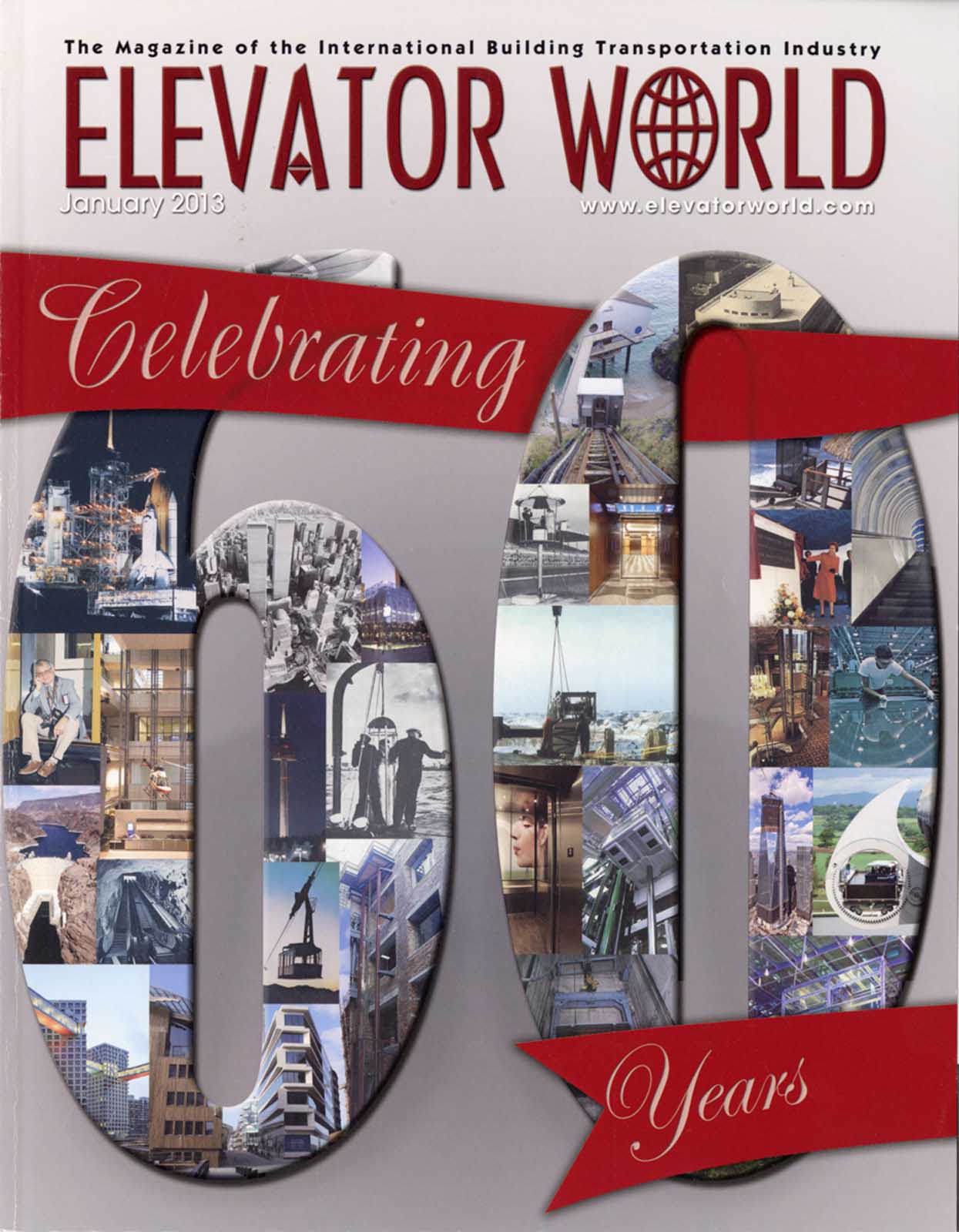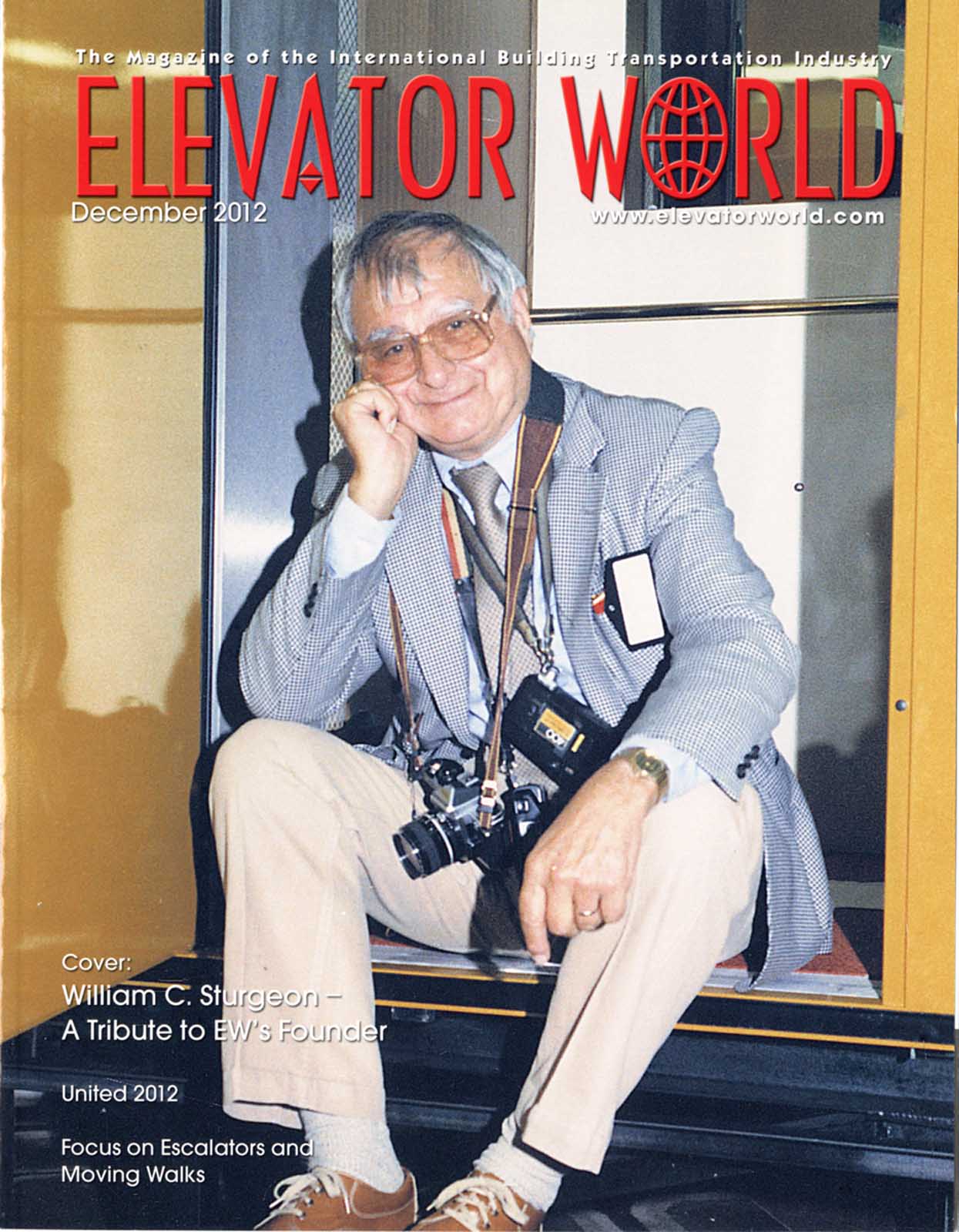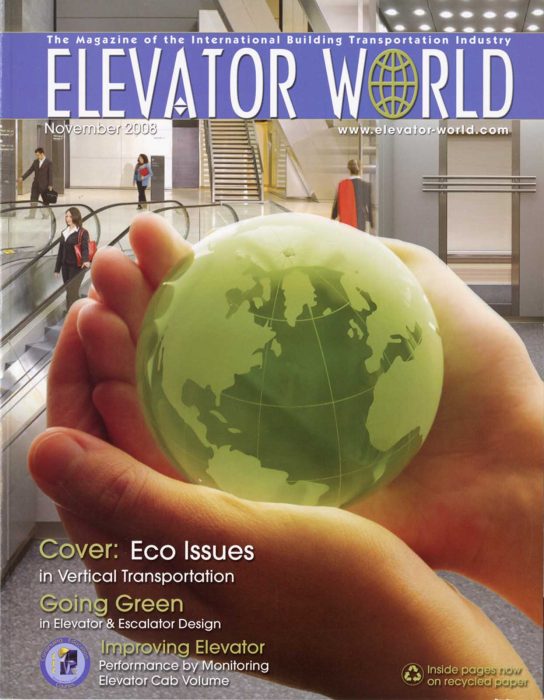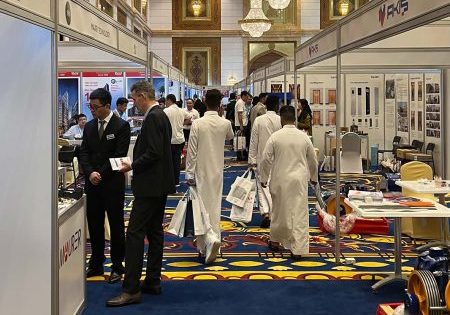ELEVATOR WORLD Turns 60
Dec 1, 2023
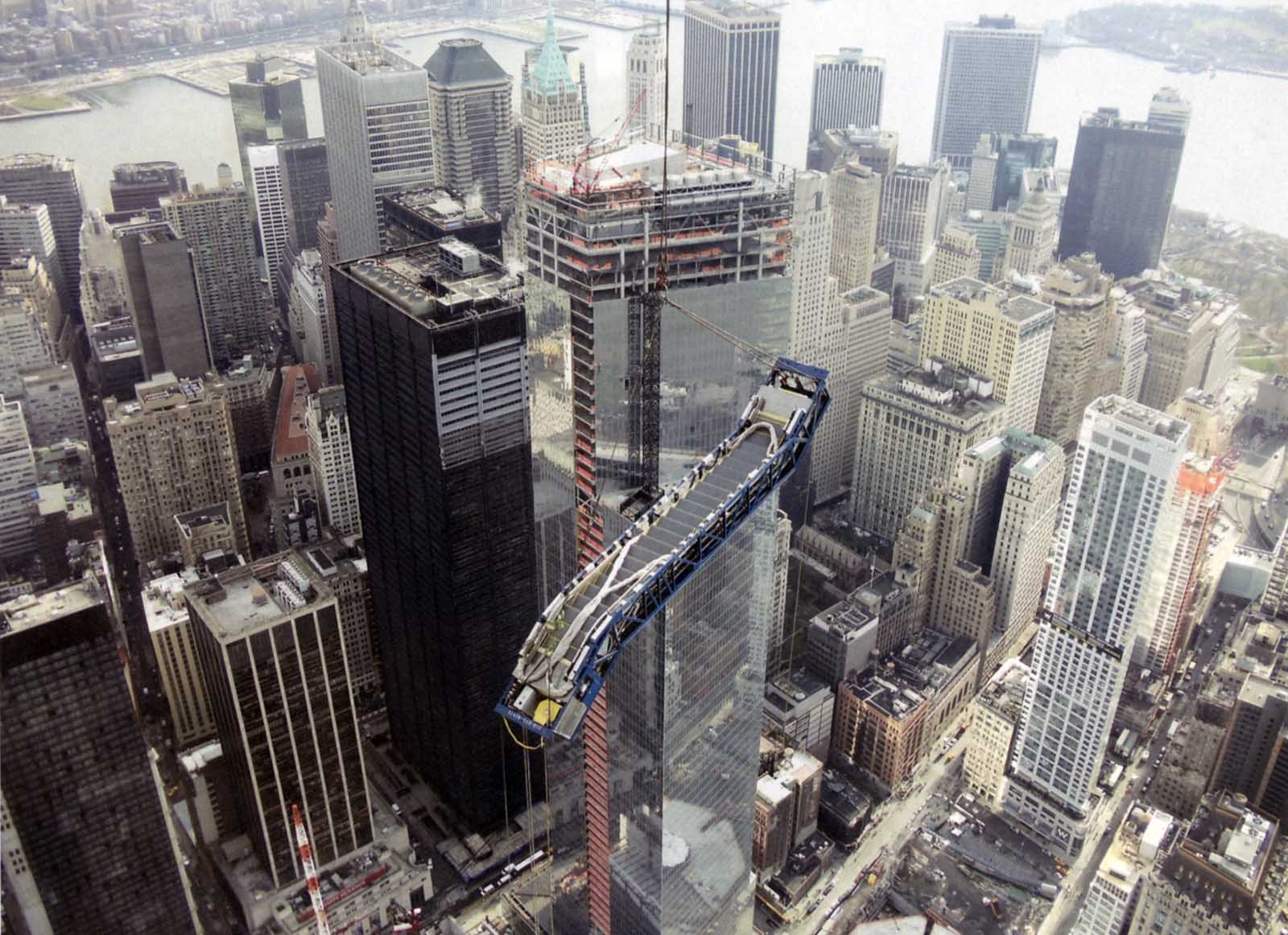
The strength of William C. Sturgeon’s legacy is seen in the magazine’s contents throughout 2013.
In 2013, ELEVATOR WORLD celebrated its 60th anniversary. While the cover of the January issue acknowledged this important milestone (Figure 1), the contents included a reminder that this important event occurred in the absence of the magazine’s founder. The Comments section included a letter from Michael Gubisch (Schaefer GmbH, Sigmaringen, Germany) titled “Sincere Condolences”:
“It is with great sadness that we learned about the passing of Elevator World founder William C. Sturgeon. He was an outstanding person in our field and will certainly be missed by many people. He was always eager to share his profound knowledge and use it for the benefit of the industry he lived in and for the safety of elevator passengers. His opinions and commentaries were always a pleasure to read, and his memory will be kept alive by your magazine, as well as by all the other organizations in which he was involved.”[1]
Sturgeon had passed away in October 2012 at the age of 95. The December issue was dedicated to his memory and was filled with remembrances and tributes that echoed those found in Gubisch’s letter (Figure 2). Consistent themes expressed in the collected remarks included acknowledgements of his industry leadership, recognition of a life well lived and a keen appreciation for his legacy as represented by EW.
The strength of this legacy was evident in the magazine’s contents throughout 2013, which included the continuation — and ongoing improvement — of past initiatives and the introduction of new features. The January issue featured the results of the 16th annual Project of the Year competition, which included nine categories and winners from across the globe: Category 1: Elevators – New Construction (Icon Tower, Oslo, Norway), Category 2: Elevators – Modernization (Federal Reserve Modernization, Washington, D.C.), Category 3: Escalator Systems – New Construction (Haciosman Metro Station, Istanbul, Türkiye), Category 4: Escalator Systems – Modernization (Cobo Convention Center, Detroit, Michigan), Category 5: Moving Walkways (Moving Walks at Bursaray Üniversite Station, Bursa, Türkiye), Category 6: Inclined Elevators (Intercontinental Danang Sun Peninsula Resort, Danang City, Vietnam), Category 7: Accessibility Systems (Abu Dhabi Presidential Palace), Category 8: Private-Residence Elevators (Residential Elevator Installation, La Jolla, California), and Category 9: Automated People Movers (East London Cable Car).
A new contest also made its debut in 2013. The August issue featured the results of the inaugural EW Photo Contest. The call for submissions encouraged:
“Our picture taking readers — individuals and companies, amateurs and pros — to submit their best industry-related photos taken anywhere in the world. We are looking for dynamic, well-composed and aesthetically pleasing photos that help tell the story of the remarkable world of vertical transportation [VT].”[2]
Entries, which could be submitted from February 1 through April 30, would be evaluated by a “panel of judges from EW” and by readers who could vote online during the month of May. Submissions could be made in one of five categories: Skylines and Tall Buildings, Elevators, Escalators/Moving Walkways, Inclined Lifts and Elevator Cabs. The magazine received 205 entries and more than 1,000 readers voted online. The quality of the photographs was such that the EW judges “felt compelled to create a new category — Machines and Components — so we could showcase a few more of the wonderful photographs we received.”[3] Each category featured a first, second and third-place winner along with one or two honorable mentions. The first-place winners included submissions from Hong Kong, Portugal, the U.K., Italy and the U.S. An indication of the overall quality of the photographs is found in an image of “the final escalator hoisted to the 101st floor of the One World Trade Center building” (Figure 3).[3]

Throughout 2013, EW continued its longstanding tradition of providing Continuing Education (CE) opportunities for industry members. This initiative was approved by the National Association of Elevator Contractors, the National Association of Elevator Safety Authorities and Qualified Elevator Inspector Services, Inc. The format was simple: Selected articles were accompanied by CE Assessment Examination Questions. Participants were instructed to read the specified article, study the reinforcement questions found at the end of the article, answer the assessment examination questions (online or on the worksheet included in the magazine) and submit the required payment (US$25.50 for subscribers and US$30 for nonsubscribers).[4] A minimum score of 80% was required to earn 0.1 CEU. Topics covered in 2013 included “Electric Motors for Elevators,” “Wet Ropes Equal Dead Ropes,” “Maintaining Elevators and Escalators in the Transit Environment,” “Energy-Efficient VVVF Hydraulic Lift Drive,” “Metal Raceways in Elevator Work” and “Telescopic Jacks.”
The organization of the magazine’s contents provided evidence of a consistent and ongoing editorial strategy designed to find the best way to meet the needs of the VT industry. The Departments section included the “Editor’s Overview,” “Comments (letters to the editor),” “Calendar,” “U.S. Industry News,” “International Industry News,” “Product Spotlight, Classified,” “Advertisers Index” and “Last Glance.” The latter section was a relatively new edition, which had first appeared in January 2007. The section consisted of a one-page illustrated story highlighting an interesting and/or unique aspect of the VT world. Perhaps the most unusual “Last Glance” published in 2013 concerned an innovative use of an abandoned elevator shaft, which was used as the site for a penthouse bathroom (Figure 4):
“The elevator for the hoistway was never installed, so architects Jorge Luis and Hernandez Silva decided to build the room with a reinforced glass floor over the unused elevator shaft. We suspect the view could even help with bathroom business, with a direct correlation to how comfortable the user is with heights.”[5]
Other new features included a regular monthly cover story, an “Online Extras” section that guided readers to additional content found on the EW website, a section titled “Features” that included articles on a variety of topics and a monthly thematic section that focused on a specific VT topic. The selected themes throughout the year included “Traffic Analysis,” “Machines, Motors and Pumps,” “Sensors,” “Green Issues,” “Rollers and Guide Rails,” “Hydraulic Lifts and Components,” “Cabs and Entrances,” “Communication Systems,” “Ropes and Cables,” “Escalators, Moving Walks and Components,” “Safety,” and “Maintenance and Inspection.”
While the majority of these topics had been typical areas of editorial focus since the magazine’s founding, some were more recent additions. In his April editorial, Robert S. “Bob” Caporale reported that:
“As in years past, readers of this year’s Green Issue will obtain a great deal of insight and knowledge relating to how our industry is addressing the environmental challenges of the present as well the future. The goal being to ensure that the world will be a better and more sustainable place for us all to live in the coming decades.”[6]
The first issue devoted to green or environmental design issues appeared in November 2008, and included 16 articles that addressed a wide range of topics (Figure 5). Green topics examined in 2013 included indoor air quality, the importance of having in-house LEED specialists and energy models for elevators.
A final topic present in 2013 reflected that — “at age 60” — the magazine had not only reached maturity, it had “lived” long enough to find itself having to report on, and experience at a personal level, the loss of industry veterans. This was the topic of a letter written by EW President and Publisher Ricia Sturgeon-Hendrick, which was sparked by a recent loss:
“Since last October, when my dad, William C. Sturgeon, died, we seem to have lost more real veterans of our industry every month. Within the last year, we lost Cal Kort, Robert Peelle, John Merkel and Quentin Bates. But the death of George Strakosch was an unexpected blow coming on the heels of the others. I miss my dad and think of him often, but I also miss the people who knew him well — who could talk to me about him.”[7]
Sturgeon-Hendrick’s comments serve as a poignant reminder of the fact that the VT industry is a close-knit community akin to a large family. In 2013, EW published 24 obituaries. These brief remembrances illustrated the lives of industry leaders and industry members. While every loss was significant, some, as was noted by Sturgeon-Hendrick, resonated throughout the entire VT industry.
Although Calvin L. “Cal” Kort had passed away the prior year, in September 2012, his inclusion in Sturgeon-Hendrick’s list of notable deaths is important in the overall context of the VT world in 2013. One of Kort’s “well-known accomplishments was his unique design of elevators for the original World Trade Center.”[8] On May 2, 2013, the construction of One World Trade Center topped out at 1,776 ft with the installation of its 408-ft-tall silver spire. This event marked a key moment in the nation’s slow recovery from the tragic loss experienced on September 11, 2001.[9]
Robert B. Peelle (1919-2013) earned a B.S. in civil engineering from Swarthmore College in 1939 and a Master of music education from New York University in 1941. This blend of disciplines provided a unique professional foundation. He began his career at General Electric, which was followed by his long career with Peelle. He and his brother “eventually headed” the company and oversaw “the expansion of several operating plants.”[10] His commitment to education remained present throughout his career, as evidenced by his earning, at age 60, an MBA from Columbia University. He retired from Peelle in 1989.
John P. Merkel began his career “in the Otis engineering department, while attending City College of New York,” where he earned a B.S. in mechanical engineering.[11] After a 20-plus year career with Otis, he joined New York Telephone to oversee “the maintenance and modernization of elevators” in the company’s properties. It was during his employment with the phone company that he applied for membership in A17.1; he served on the A17.1 Main Committee and on other code committees for more than 20 years.
V. Quentin Bates Jr. was one of the founders of the professional consultant sector of the modern VT industry. A graduate of West Point, at the “conclusion of his military service he joined the Elevator Maintenance Co. of Los Angeles as a construction and service helper.”[12] He remained after the company was purchased by Haughton, working first as a trainee in Los Angeles and later as a sales representative in San Francisco. He joined Charles W. Lerch and Associates as a vice president in 1964. Ten years later, the company became Lerch Bates and Associates, Inc. Bates contributed numerous articles to EW and served on the magazine’s Board of Directors and Technical Communications Council. He also served on the first Elevcon Steering Committee and played a critical role in the successful launch of the first meeting, held in Nice, France, in 1986.
Some of the many contributions of George R. Strakosch (1924-2013) to the VT industry and to EW have been touched on in my earlier articles chronicling the magazine’s history (see “Elevator World in 1983” and “Elevator World: 1993”). As was noted by Sturgeon-Hendrick in her remembrance, Strakosch possessed a “larger-than-life presence.”[7] A biography of this extraordinary individual will be the subject of a future article. A final loss that should be acknowledged is the death of German engineer Walter Dörr (1925-2013). Dörr collaborated on more than 25 German and international patents, and worked for R. Stahl, Ziehl-Abegg Inc. and Loher GmbH before joining the faculty of the Heilbronn Engineering School in 1961. In 1971, he was a “founding member of the Technical Academy at the Heilbronn University of Applied Sciences,” and he played a critical role in the launch of first Heilbronn Lift Conference in 1984.[13]
2013 was an anniversary year in which EW continued to demonstrate its commitment to serving the VT industry through its content, editorial strategies, industry engagement and acknowledgement of the importance of the past through its celebration of the lives of those who played critical roles in the industry’s development throughout the 20th and into the 21st century.
References
[1] Michael Gubisch, “Comments: Sincere Condolences,” Elevator World (January 2013).
[2] Announcement of Elevator World Photo Contest 2013, Elevator World (January 2013).
[3] “Photo Contest 2013 Winners,” Elevator World (August 2013).
[4] “Continuing Education Questions and Answers,” Elevator World (February 2013).
[5] “Last Glance: Enthroned Above,” Elevator World (November 2013).
[6] Robert S. Caporale, “Editor’s Overview: A Focus on Green Issues,” Elevator World (April 2013).
[7] Ricia Sturgeon-Hendrick, “Comments: Losing Veterans,” Elevator World (September 2013).
[8] “U.S. Industry News: In Memoriam: Calvin L. Kort,” Elevator World (November, 2012).
[9] “U.S. Industry News: One WTC Tops Out,” Elevator World (July 2013).
[10] “U.S. Industry News: In Memoriam: Robert S, Peelle,” Elevator World (June 2013).
[11] “U.S. Industry News: In Memoriam: John P. Merkel,” Elevator World (July 2013).
[12] “U.S. Industry News: In Memoriam: Quentin Bates,” Elevator World (August 2013).
[13] “International Industry News: In Memoriam: Walter Dörr,” Elevator World (September 2013).
Get more of Elevator World. Sign up for our free e-newsletter.
